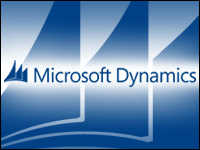
Salesforce has announced new integrations for Quip, the collaboration startup it acquired last summer for US$582 million.
Quip, which operates independently, also added new capabilities to its product’s existing feature set, which includes smart notifications, chat built into every document and spreadsheet, and a smart inbox. Quip lets users direct-message group members. Users can insert items such as code, images, cells and spreadsheets into a document.
The new integrations Salesforce introduced are Quip Connect and the Quip Lightning Component.
“Integration of Quip is another advancement in Salesforce’s strategy to bring collaboration in context into the CRM stream,” noted Rebecca Wettemann, VP of research at Nucleus Research.
“The company started it with Chatter some years ago,” she told CRM Buyer. “Quip brings more structure and workflow to the mix.”
Quip Connect lets users export reports to Quip documents and spreadsheets with Live Data. Once imported, the data automatically syncs with Salesforce. If Live Data changes in Salesforce, the relevant Quip doc automatically receives an update.
The Quip Lightning Component lets teams link, access and create Quip documents, spreadsheets and task lists directly within Salesforce.
Lightning Components are used to create custom apps, so admins and devs will be able to extend Quip features directly into the heart of any app.
Quip’s Revamp
Quip’s redesign adds new project management capabilities.
Quip Checklists include related roadmaps, meeting notes, budgets, design assets and conversations, with project management screens.
Users can add reminders to anything from spreadsheet rows to drafts awaiting review. They can type a teammate’s name to create a mention and assign a task, or select a date to create a built-in reminder.
Tasks proactively notify users when a task due date is near, and call their attention to relevant comments.
Quip’s sidebar now serves as a workflow tool.
Quip also introduced colorful new menus that adapt to fit the work users are doing in documents, spreadsheets or checklists. Information and items users need are displayed up front.
Quip’s new user experience and Quip checklists are available now for all Quip users at no extra charge.
Quip Connect will be available on the Salesforce AppExchange next week.
The Impact of a Good Quip
“For years, full-featured word processors were the standard way for authors to create content,” said Allan Lepofsky, a principal analyst at Constellation Research.
“With the rise of Web-based tools and a cultural shift to more collaborative work, a new breed of content-authoring tools is gaining popularity, including Box Notes, DropBox Paper and Salesforce Quip,” he told CRM Buyer.
The seamless integration between Salesforce and Quip “means people will be able to create and share information without having to copy and paste between tools, and information can always be up to date,” Lepofsky observed.
While Chatter drove “significant productivity benefits for Salesforce users,” they “were sometimes challenged to manage Chatter effectively,” Nucleus’ Wetttemann pointed out.
The structure Quip adds and its living document capabilities make it “likely to drive additional productivity for users,” she said.
Sizing Up the Competition
Quip’s main competitor is Microsoft Dynamics 365, “which brings together the CRM and ERP of Dynamics with Office 365,” Wettemann said.
Even so, Office 365 “is really a very different animal from Quip, [which has] a more modern team-focused paradigm,” she pointed out.
While Quip has some nice features, “I’m not sure anyone has completely rationalized sales management adequately,” cautioned Michael Jude, a program manager at Stratecast/Frost & Sullivan.
“CRM’s a problem, because typical RM tools assume a static customer space,” he told CRM Buyer, but “customers change all the time.”
Quip “reduces the overhead of sales management and other business intelligence activities,” Jude pointed out. “Whether that translates into a competitive advantage would depend on the business, and how much time they devote to that currently.”
























































This needs decoding: ""CRM’s a problem, because typical RM tools assume a static customer space," he told CRM Buyer, but "customers change all the time."
1* what is RM?
2* what is meant by static customer space?
3* what is meant by customers change all the time?
Other than that, a great quote 😉